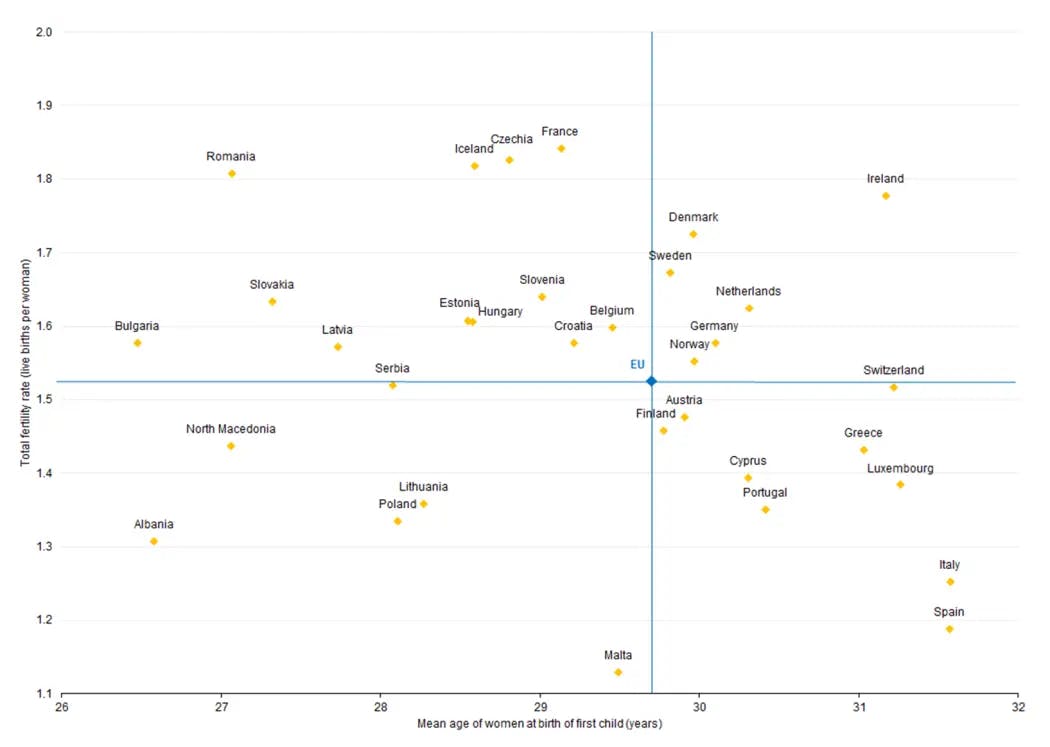4 million children per year: the fertility rate keeps falling in Europe

Eurostat has published a new report on fertility in the European Union. After analyzing data for 20 years, from 2001 to 2021, the statistical organization came to disappointing conclusions.
In 2021, 4.09 million children were born in the European Union. This is a very small increase compared to the previous year: 4.07 million children have been born in 2020. While there was an increase in the early 2000s, the number of babies in families in Europe has continued to decline since 2008.
How many babies are born in Europe?
A new study examined fertility coefficients. There were three peaks in total during this twenty-year period: in 2008, 2010, and 2016, and the maximum fertility figure was 1.57. In subsequent years, the value varies between 1.51 and 1.57, reaching just 1.53 in the last year of the collected statistics, 2021.
The overall fertility rate is the average number of children that would be born by a woman during her childbearing years, according to the fertility rate of the country. This figure does not take into account mortality or the aging of the population. The ideal number for preserving the same population is 2.1.
In 2021, the highest total fertility rate in the EU belonged to neighboring France, with 1.84 births per woman. Next comes the Czech Republic (1.83), Romania (1.81) and Ireland (1.78). Finally, the lowest rates were found in Italy (1.25) and Spain (1.19).

Luxembourg is not exactly succeeding here either. In 2021, the total fertility rate in the Grand Duchy was only 1.38. Almost half, namely 46% of the children born in the European Union in 2021 were first-born, and in Luxembourg, this percentage was even higher than the average — 53.3%.
Why are there fewer children?
Given the statistics showing a significant increase in Luxembourg's population, it might seem that there is no real problem here. But what makes the Grand Duchy unique is its multi-ethnic expat population. In fact, it contributes to reducing the overall aging of the population as well, because expats are, on average, much younger than the native population, according to Statec.
As for women, the average age of women in Luxembourg is 42.4 years (compared to the average age of expat women of 38.1 years). The aging of the female population is not the only problem when it comes to childbirth in Europe. Lack of measures to support and stimulate demographic growth, gender inequality in wages and employment, and economic and social crises have not helped the situation at all.





